Drift Mapping Hamburg. Hafencity > Fish Island, Bakewell > Berliner, Here > Eternity…
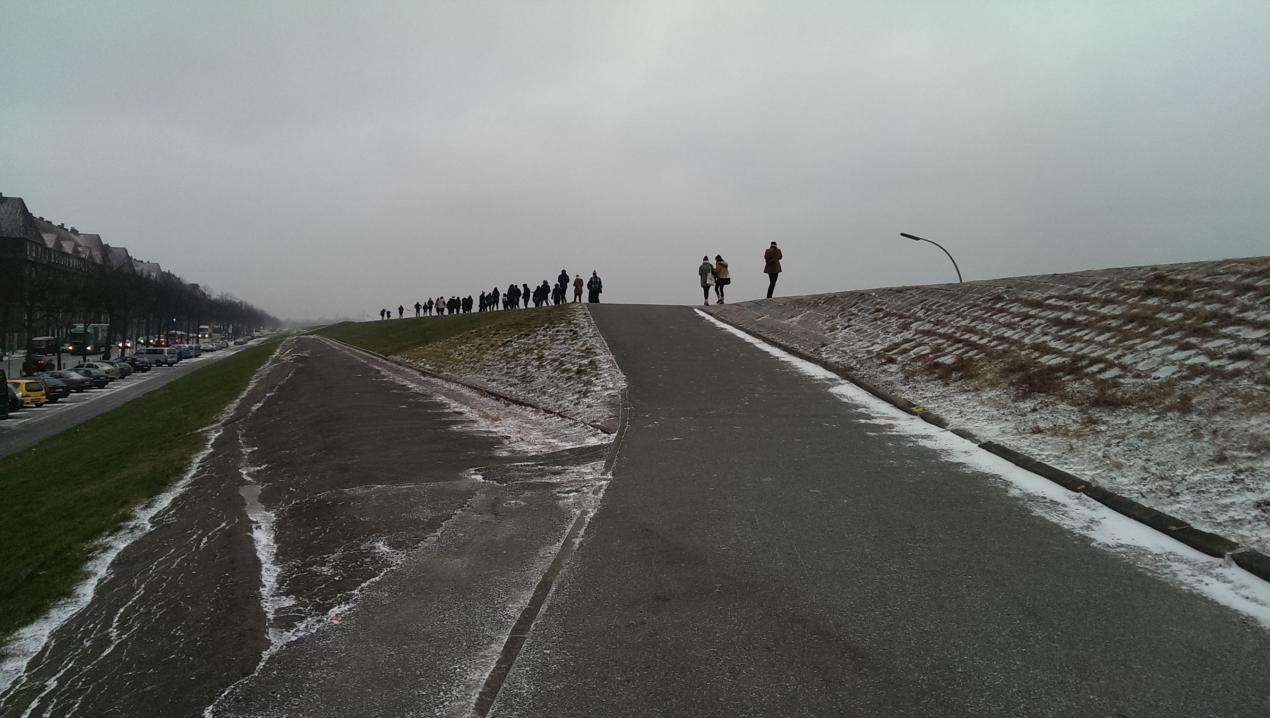
Kleine Pause, a busy little family-run café in Wohlwillstrasse, Hamburg. Currybratwurst, Rostbratwurst, Schinkenwurst. Sam, Lucy, Alex and I have reached the end of a day endurance drifting the city. Losing our bearings, finding them and losing them again, phew. Our approximate route identified with heavens gaze, (google-earth), views sought from local friends, (spotted-by-locals), and sweeps of The News for Street Activity (Das Real Life Game in der Gefahrenzone Hamburg). The drift sampled a range of conditions encouraging comparisons to be drawn with Hackney Wick and Poplar - areas of East London that have been the focus of two years of drifting by myself and Chloe Street creating ‘Lea Valley Drift’.
Hamburg offers surprising parallels and a reversal of topography. For ‘Olympic Venues’ (London), on-time and on-budget, read ‘Elbphilharmonie’ (Hamburg), seven years late and €250,000,000 over-budget, for ‘London (Olympic) Legacy Development Corporation’ read ‘HafenCity Hamburg GmbH’, For ‘Tumbling Bay Playground’ (Queen Elizabeth Olympic Park) read ‘Treasure Island at ViewPoint’ (Hafencity) + (An island on an island). Intriguingly both cities have adopted the palm tree as both an official and wry smile emblem of regeneration. Paradise in the making. Luxuriance and ‘Luxuriance’, unbounded optimism and ironic self-parody. The development of ex-docks islands in Hamburg is creating anxiety in the mainland city whilst in London the ex-industrial Olympic developments, on the mainland, are creating pressure and anxiety on Fish Island (A key neighbourhood on the Olympic fringe).
The larger Hamburg islands of Hafencity are the areas destined for intense development, well, developers have their fingers crossed, whilst the adjoining, walled, once walled, city is the established hub and the St Pauli area the wonderfully lively, happy, artist, café, bar and club scene that feels itself under threat from the gold-rush of gentrification. Residents are marching armed with toilet brushes - a joyful dig at the appealing, but pricy to the taxpayer, Elbphilharmonie whose golden brushes are apparently on order at €300+ a piece (thelocal.de).
Our drift proceeded from St Pauli Cool (Deathpresso anybody?), to repurposed industrial, to blank-walled expo, to parkland (Brr, it is -12), to commercial fringe, to wealthy-mid-town, to parliament square, to university, to gallery quarter, to blue chip, to rather too efficiently leveled docklands, to chunky residential, to energiebunker, to business park (McFlurry Kirsch Knusper), to waterfront, to hotel district, to Reeperbahn, to Kleine Pause. About 20km of walking in all. A Grosse Pause was needed, really, after all that.
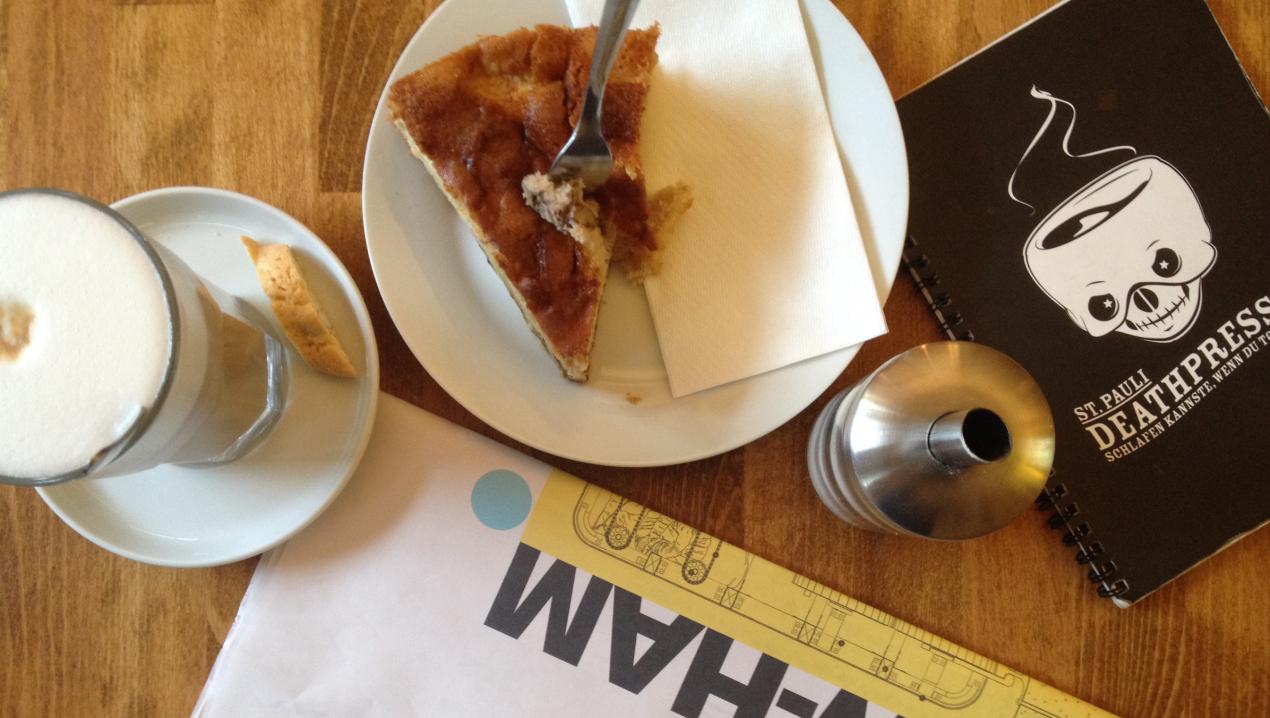
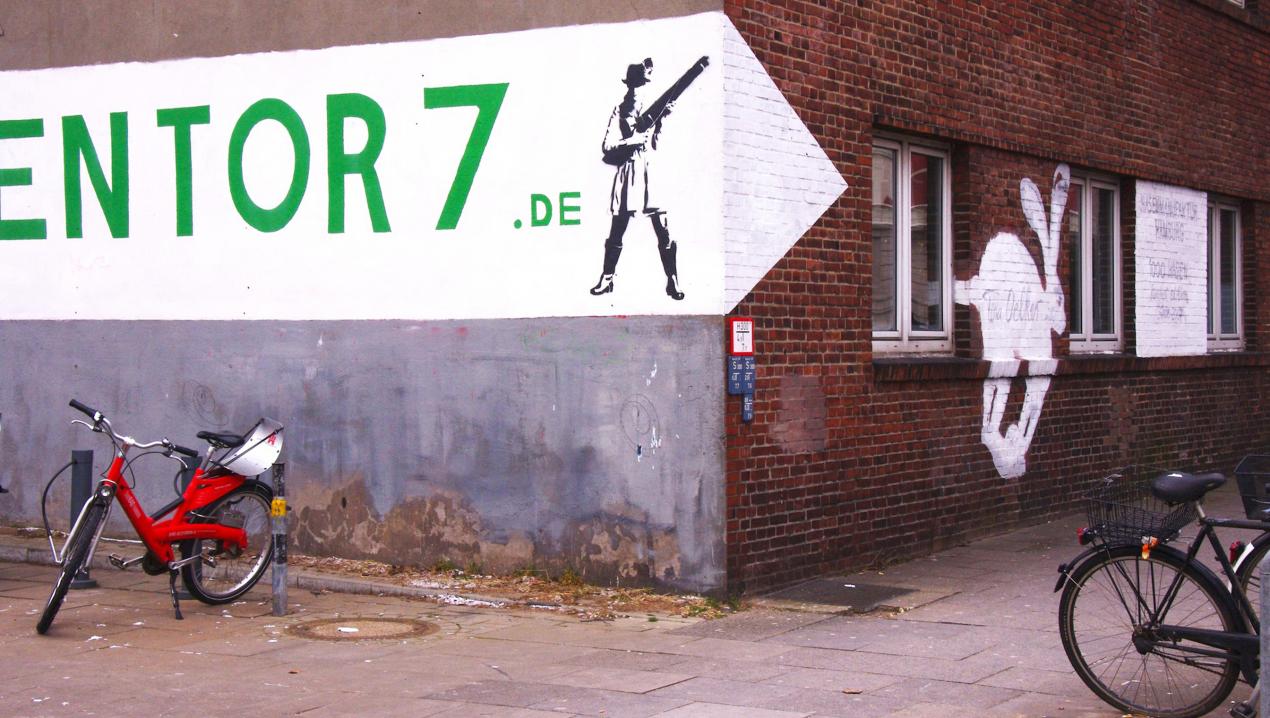 A city is rapidly assimilated with this approach. And possibly no Hamburger, or Hamburgerine, has collected their city along quite this route. Walking forms a mental map at the same time as tracing, proving and exposing flaws in a paper one. It provides an automatic measure of relative scale, contours and exposure. We emerge equipped with a rolling, sprawling, collection of city characteristics: 15% park, 8% bars, 45% monotony, 11% surprise, 10% uphill, 15% windy, 4% snow, 53% with briefcases, 3% silent, 80% conversation, 2% with chocolate, 5% with pink mittens…… tick, tick, tick, the data accumulates and updates. We make sense of it relative to other counts in other cities. Other chill winds. Other steamy coffee shops. Other old ladies with extravagant hats. Memories are redistributed. Passions ignited and quenched, Berliners and Bakewell Tarts compared, gargoyles and Sweet Toof weighed, Alka Seltzer and hangover-cure-gherkin contrasted, and so it goes on, coffee at dawn.
A city is rapidly assimilated with this approach. And possibly no Hamburger, or Hamburgerine, has collected their city along quite this route. Walking forms a mental map at the same time as tracing, proving and exposing flaws in a paper one. It provides an automatic measure of relative scale, contours and exposure. We emerge equipped with a rolling, sprawling, collection of city characteristics: 15% park, 8% bars, 45% monotony, 11% surprise, 10% uphill, 15% windy, 4% snow, 53% with briefcases, 3% silent, 80% conversation, 2% with chocolate, 5% with pink mittens…… tick, tick, tick, the data accumulates and updates. We make sense of it relative to other counts in other cities. Other chill winds. Other steamy coffee shops. Other old ladies with extravagant hats. Memories are redistributed. Passions ignited and quenched, Berliners and Bakewell Tarts compared, gargoyles and Sweet Toof weighed, Alka Seltzer and hangover-cure-gherkin contrasted, and so it goes on, coffee at dawn.
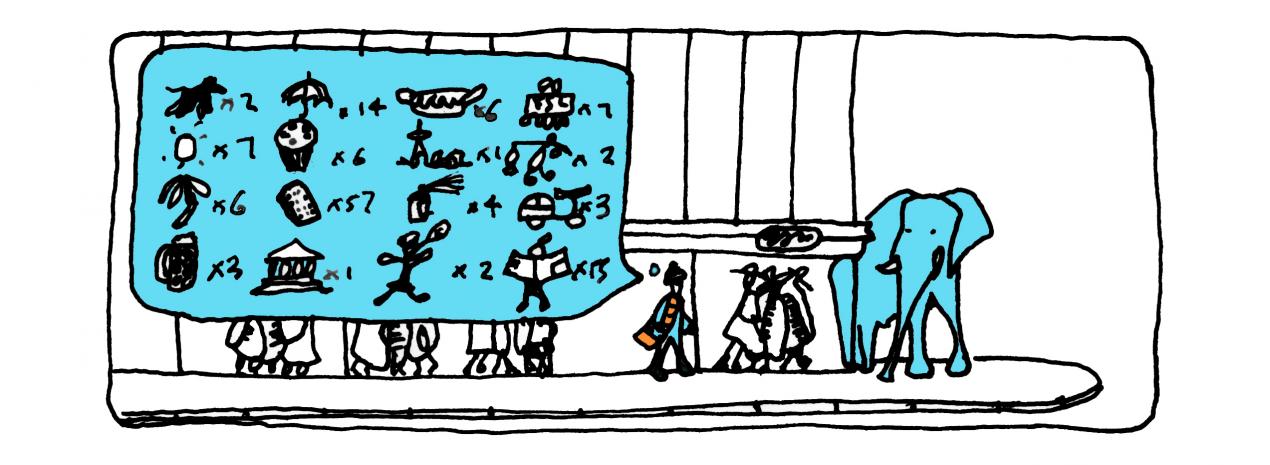 And, for the designer, for the imagination, a constant flow of decisions to admire, missed opportunities to mourn and possible innovations to test mentally and file away for another day. Wouldn’t those memorials set into the pavement be more poignant made of bone? What temporary humour might activate those island deserts? Could frost be tagged by heat gun? Conversations along the way, other imaginations, other back-catalogues of experience; fire, focus, scramble, reform and re-form our thoughts.
And, for the designer, for the imagination, a constant flow of decisions to admire, missed opportunities to mourn and possible innovations to test mentally and file away for another day. Wouldn’t those memorials set into the pavement be more poignant made of bone? What temporary humour might activate those island deserts? Could frost be tagged by heat gun? Conversations along the way, other imaginations, other back-catalogues of experience; fire, focus, scramble, reform and re-form our thoughts.
How does this data settle in the broad mudbank of the mind? How does it conform to models of the city that we hope to discover or create? What are we left with? And who? Walking from Highgate to Chelsea in London on another mapping project, Spatial Translations, with designers and photographers, revealed some of the significance of these prior models. For designers opportunity seems often to be presented by one kind of absence, absence with potential to become a presence, a site for designed intervention, whilst for photographers revealing the trace of a prior presence, a presence that could be suggested and re-constructed by the viewer of a photograph was more appealing. What was actually present, in the moment, was less appealing to both groups. Perhaps the present requires no guide whilst past and future conditions need to be uncovered, created, described? They give us ‘creatives’ a role.
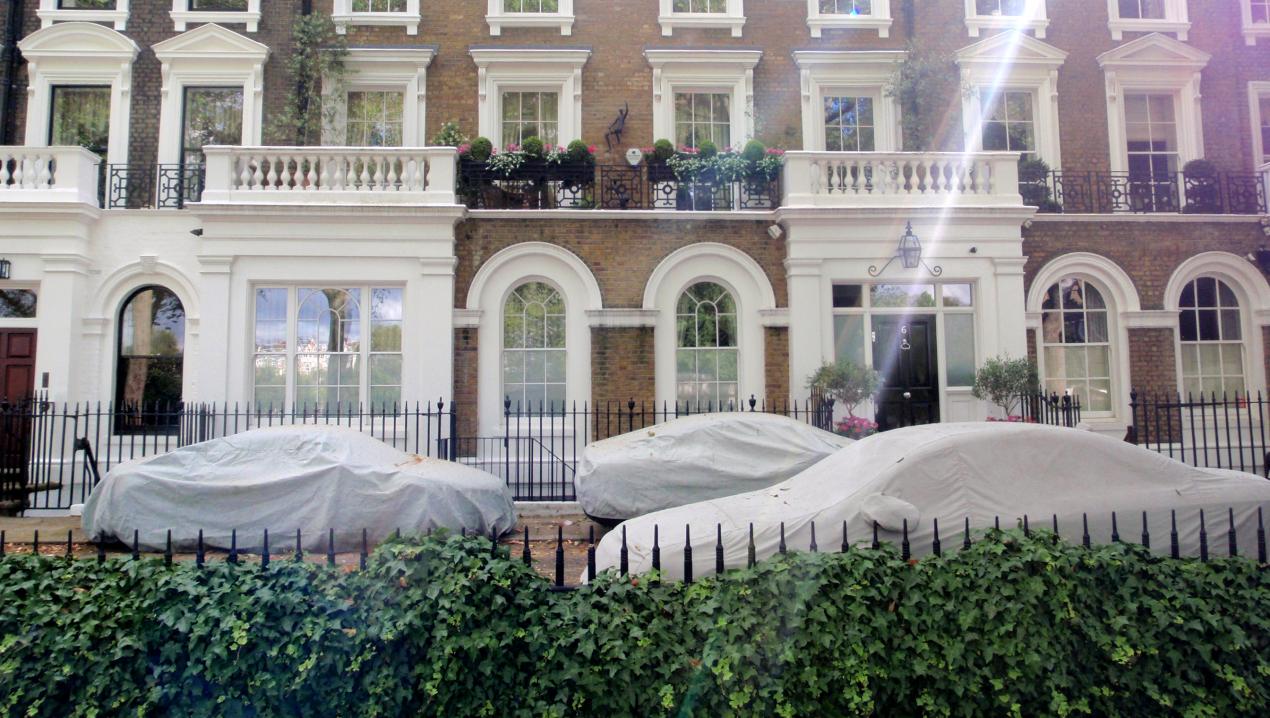 Anna Best captured another aspect of this desire to find and share what we can call our own, some basic notion of ownership = belonging, in her 2005 project ‘Occasional Sights’ which invited anybody observing an intriguing transient moment to send in a photograph - thus creating a London guide composed entirely of items that couldn’t be found, and never would be found again, but which pinpointed a mode of city living that was quirky, alive, responsive. To some extent we are still experiencing the ripples created by Robert Smithsons ‘site, non-site’ terminology, first deployed in 1967. Once released from the gallery the artists eye, the artists eye within us all, roams everywhere. Nothing is quite as it seems, still. A constant challenge to close definition.
Anna Best captured another aspect of this desire to find and share what we can call our own, some basic notion of ownership = belonging, in her 2005 project ‘Occasional Sights’ which invited anybody observing an intriguing transient moment to send in a photograph - thus creating a London guide composed entirely of items that couldn’t be found, and never would be found again, but which pinpointed a mode of city living that was quirky, alive, responsive. To some extent we are still experiencing the ripples created by Robert Smithsons ‘site, non-site’ terminology, first deployed in 1967. Once released from the gallery the artists eye, the artists eye within us all, roams everywhere. Nothing is quite as it seems, still. A constant challenge to close definition.
If these macro purposes block, privilege and augment our repositories of experience which of our discoveries will survive and percolate upwards to be acted upon? Become urgent and necessary, vibrant and life affirming? And which will fade. Dry, ossify, and be time-crushed to dust, drift away on the breeze of another winter… Beckon another spring. Another way.
Oliver Froome-Lewis, Alex Smith, Sam McElhinney and Lucy Jones drifted Hamburg with students from Canterbury School of Architecture, UCA, in early February, 2014. Oliver lives in London, runs the degree course at Canterbury, and leads the research project ‘Touching the City’. He has recently completed ‘Lea Valley Drift’, a mapping project commissioned by the LLDC for the Olympic Fringe, with Chloe Street.
Links:
http://www.touchingthecity.com
http://www.iba-hamburg.de/en/projects/energiebunker/projekt/energy-bunker.html
